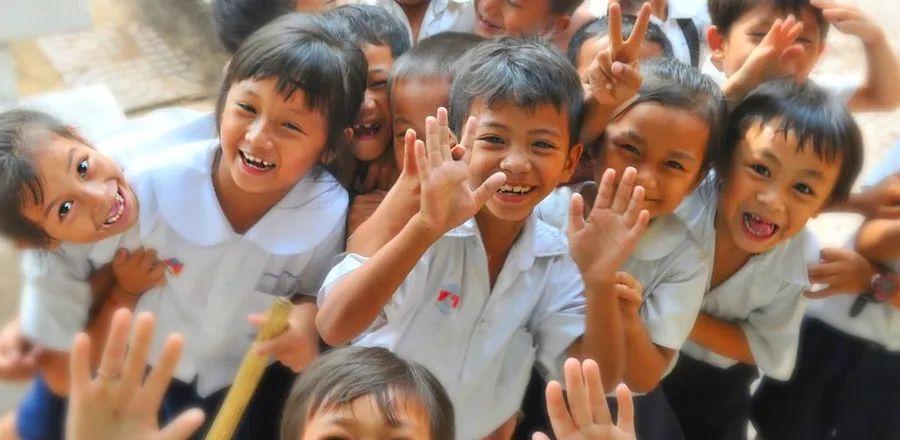Exploring How Different Cultures Greet Each Other Around the Globe

In numerous Western nations, a firm handshake accompanied by eye contact—or even a casual fist bump—is regarded as a friendly and respectful way to greet new acquaintances. However, in other regions of the world, this may not hold true. Understanding how locals greet one another is essential for establishing meaningful connections wherever you find yourself. After all, the diversity of common greetings across different places is truly fascinating.
From touching noses in Qatar to bowing in Laos, here are 10 customary greetings from various countries and cultures.
1. Sticking Out Your Tongue
Tibet
This unique greeting tradition stems from a rather infamous king. It originated with monks who would protrude their tongues as a sign of peace, indicating they were not the reincarnation of a cruel 9th-century ruler named Lang Darma, notorious for his black tongue. This greeting tradition ultimately gained popularity.
2. Touching Noses
3. Air Kissing on the Cheek
France, Italy, Spain, Belgium, Portugal, Latin America, Ukraine, and Québec, Canada
In countries like Argentina, Chile, Peru, Mexico, São Paulo (Brazil), and Colombia, it’s customary to exchange one air kiss (either hovering over the right or left cheek). In contrast, Spain, Portugal, Paraguay, Italy, and cities such as Paris and Québec typically involve two air kisses. In Russia and Ukraine, the standard is three, while in some regions of France, it can go up to four alternating air kisses.
To complicate matters further, there are specific gender and relationship norms to consider. In all the countries listed, women kiss women, and in most cases, men kiss women. However, in Argentina, men also commonly kiss each other on the cheeks, even if they aren’t relatives or partners. In Belgium, a quick handshake is suitable for acquaintances, but friends and family often greet each other with three air kisses.
4. Nosing (and occasionally forehead touching)
New Zealand
If air kisses feel too personal for your liking, consider the hongi instead. This traditional Māori greeting involves pressing foreheads and noses together, symbolizing a "sharing of breath." It signifies the sacred welcome of a guest into Māori culture and is typically performed during pōwhiri (Māori welcoming ceremonies), requiring an invitation to partake.
5. Handshakes
Botswana, China, Germany, Zambia, Rwanda, and the Middle East
A handshake may appear straightforward, but it varies significantly around the world. In Middle Eastern nations, for instance, only the right hand is used for greetings, as the left hand is deemed unclean. When greeting in China, a lighter grip is preferred, while those meeting Germans should remember to conclude after one firm downward shake.
6. Handclapping
Zimbabwe and Mozambique
There's something charming about incorporating applause into a greeting, isn't there? In Zimbabwe, handclapping follows a call-and-response pattern after shaking hands—the first person claps once, and the other responds with two claps. Just be mindful of how you clap. Men align their fingers and palms, while women position their hands at an angle. In northern Mozambique, people also clap three times before saying “moni” (hello).
7. Place your hand on your heart
8. Bow
Cambodia, India, Nepal, Laos, Thailand, and Japan
When it comes to bowing, the focus isn't just on when to bow, but how to perform the gesture. In cultures such as India, Nepal, Cambodia, Laos, and Thailand, you bring your palms together in a prayer-like position at heart level or higher and then gently lower your head to bow. In India and Nepal, the greeting is often accompanied by the word 'namaste,' a Sanskrit term meaning 'I bow to you,' which conveys respect and gratitude.
In Thailand, the act of bowing is known as the wai, and the height at which you place your hands reflects the level of respect you're showing. Conversely, in Japanese culture, a deeper bow signifies greater respect than a slight nod (the maximum bow is 90 degrees), and prayer hands are not used. Men typically bow with their hands at their sides, while women place their hands on their thighs. Among younger generations, a more pronounced head bow, akin to a nod, is gaining popularity.
9. Sniffing Faces
Greenland and Tuvalu (Oceania)
There's nothing quite like the scent of someone you care about . . . or even someone you've just met. In Greenland, kunik is an Inuit practice that involves placing your nose and upper lip against someone's cheek or forehead to sniff, typically reserved for very close relationships. In contrast, on the South Pacific island of Tuvalu, pressing cheeks together and inhaling deeply is part of a traditional Polynesian greeting for visitors.
10. Addressing elders before younger individuals
Asia and Africa
In both Asia and Africa, showing respect for elders is deeply ingrained in cultural practices. This involves greeting older individuals before younger ones and using appropriate titles and respectful terms when first meeting them. In the Philippines, there's a distinct way of honoring elders: locals gently press an older person's hand to their forehead. In India, it’s customary to touch the feet of older people as a sign of respect. Similarly, in Liberia and among the Yoruba people of Nigeria, young individuals often kneel to pay homage to their elders.
What to do if you mistakenly use the wrong traditional greeting
It’s a common scenario: you arrive in a new place and aren’t sure of the appropriate greeting, so you resort to what you know from home. We've all experienced it. Sometimes, it’s best to adapt to the situation—if someone is leaning in for a cheek kiss, just go with it.
However, the optimal approach is to do a little homework before you travel. Alternatively, you can simply inquire about local customs. A straightforward question like, 'I’m new here and want to ensure I respect the local culture. Is there a proper way to greet people?' can be very helpful.
This article was first published online in January 2018; it was updated on May 17, 2023, to reflect the latest information.

1

2

3

4

5
Evaluation :
5/5